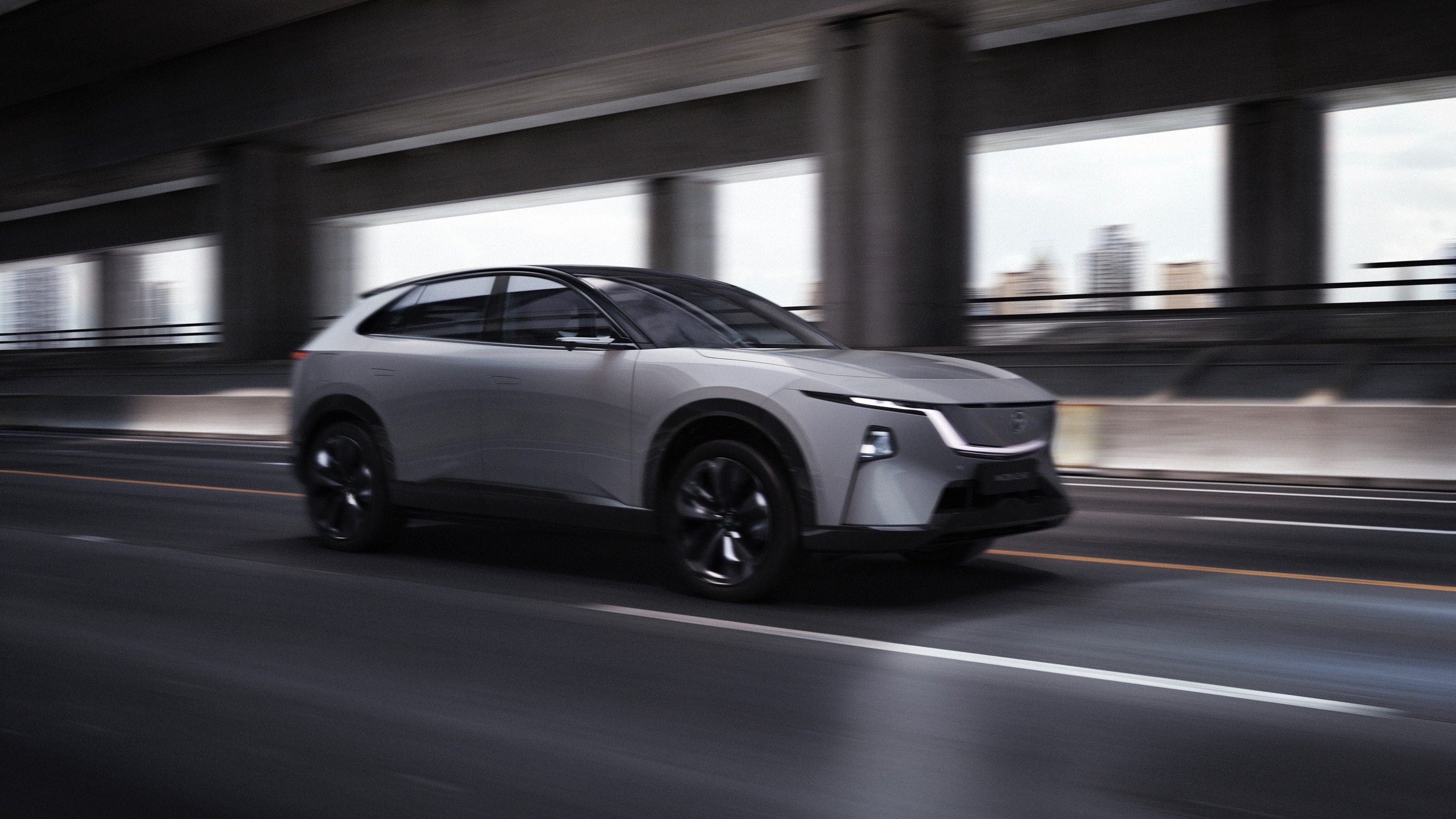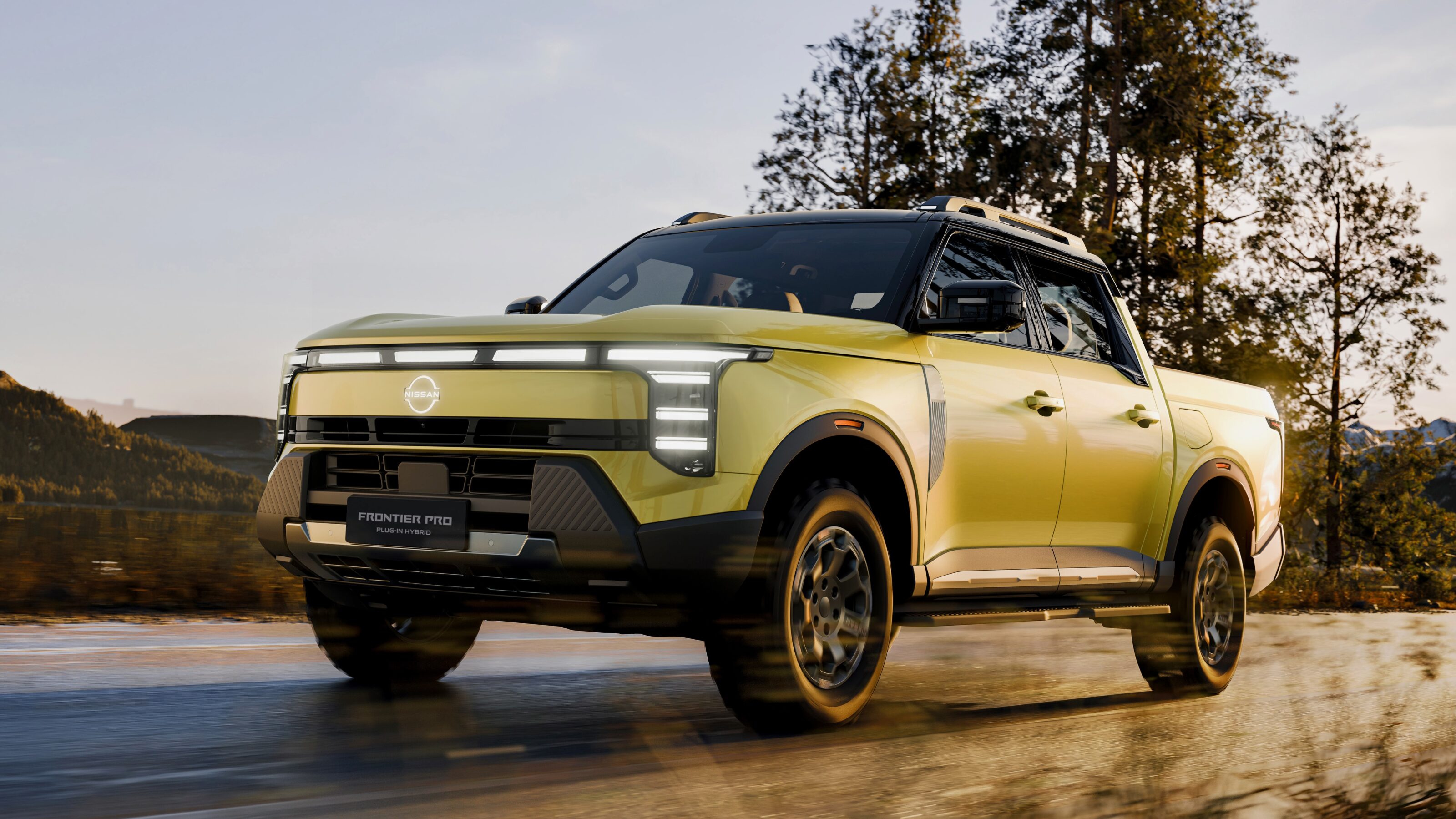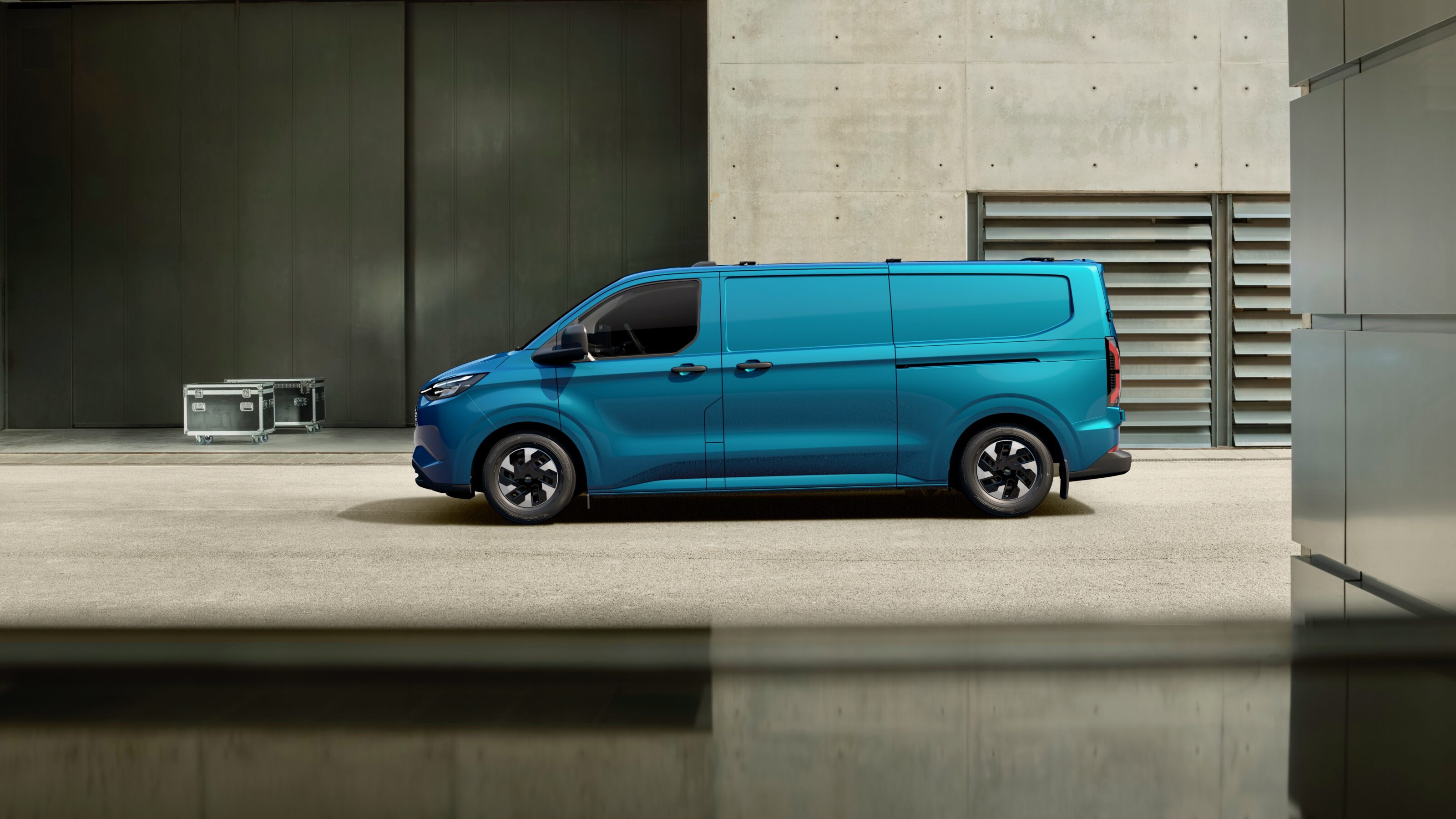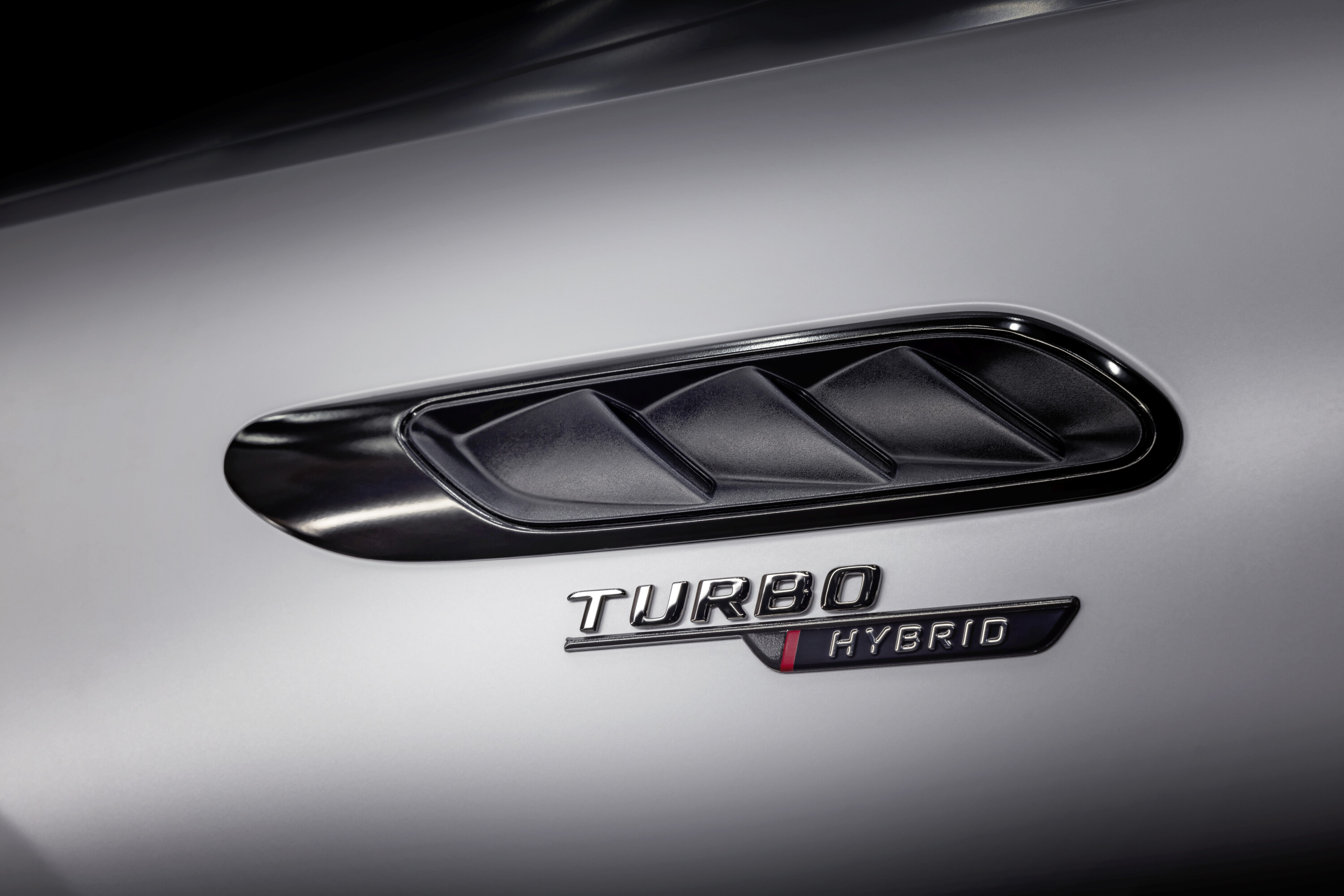
Sales of hybrid and plug-in hybrid vehicles grew by 20 per cent in 2023 – accounting for one in 10 new-car sales.
More options are on the way in 2024, for buyers who maybe aren’t quite ready to commit to a fully electric car or are simply looking for a vehicle that delivers better fuel economy than a regular petrol or diesel model.
Toyota and Lexus, as the pioneers of hybrid technology, are in the mix, of course, though there are also significant combustion-electric models from the likes of Hyundai and Kia.
There’s even a first plug-in hybrid from Volkswagen, while we also cover new models featuring ‘mild hybrid’ 48-volt technology.
JUMP AHEAD
Small SUVs
Medium SUVs
- BYD Seal U
- Citroen C5 X Plug-in Hybrid
- Hyundai Tucson Hybrid
- Jeep Compass 4xe
- Kia Sportage Hybrid
- MG HS
- Mercedes-AMG GLC63 S E
Large SUVs
Passenger cars
Utes
Sports cars
- Chevrolet Corvette E-Ray
- McLaren Artua convertible
Crossovers
Small SUVs
Cupra Formentor VZe
The Spanish brand is moving to give its models a more instantly recognisable face with triangular lighting, and the Formentor will see such adjustments in the coming weeks, alongside the updated Leon hatchback and Born electric car.
The 2024 Formentor was snapped previously at a Cupra preview event and featured on sites such as Cochespias. The VZe plug-in hybrid uses a 1.4-litre petrol engine teamed with a battery pack and electric motor to drive the front wheels via a six-speed DSG automatic.
Lexus LBX
The new most affordable Lexus model, the LBX arrived in the first half of 2024 as the posh spin-off of the Toyota Yaris Cross baby SUV.
The LBX does share a platform and similar 4.2-metre length with the Toyota, but it features different styling treatments for its exterior and interior.
And while it utilises the same three-cylinder petrol engine under the bonnet, the Lexus adopts a bigger NiMh battery to drive its more powerful (100kW) hybrid set-up.
A three-model range comprises a front-wheel-drive Luxury or Sports Luxury and an all-wheel-drive Sports Luxury. In addition to an extra (rear) electric motor, the AWD features a more sophisticated multilink rear suspension and higher equipment level Sport Luxury includes a 13-speaker Mark Levinson audio system.
With its entry-price kicking off at $47,550 before on-road costs, Lexus’s new most affordable variant is on sale now.
Nissan Qashqai e-Power
A year after the launch of the latest-generation Qashqai, Nissan’s small SUV gains a new, more economical variant.
The Nissan Qashqai e-Power arrives as a rival to hybrid versions of the Toyota Corolla Cross, Honda HR-V, and Haval Jolion.
Unlike current Qashqai models powered by 1.3L four-cylinder engine, the e-Power follows the same tech route as the X-Trail e-Power – combining an electric drive motor with a petrol engine used as a generator.
As with Nissan’s midsized SUV, the e-Power variant sits at the top of the Qashqai range – priced from $51,590 before on-road costs.
That means it commands a $4200 premium over the petrol-engined Ti.
Toyota C-HR
Toyota’s style-driven compact SUV arrived in early 2024 in second-gen form – this time with hybrid-only drivetrain options.
The front-wheel-drive GXL and Koba models pair an Atkinson cycle 1.8-litre four-cylinder petrol with a 70kW/142Nm electric motor (17kW more than before thanks to twice as many motor magnets) for a total 103kW output.
The base car’s economy is 0.3L/100km better than before at 4.0L/100km.
At the top of the range, a new GR Sport variant grabs the 2.0L petrol and electric motor combination from Toyota’s other small SUV, the Corolla Cross, to offer all-wheel drive and total power of 146kW.
Pricing has jumped dramatically, with the 2WD C-HRs increasing by more than $11,000, or 35 per cent.
Medium SUVs
BYD Seal U
The Seal U plug-in hybrid SUV looks set to arrive in 2024 as a rival to the Mitsubishi Outlander PHEV.
Although not yet officially announced for Australia, government documents show the Seal U has been approved for sale here, with two ‘DM-i’ plug-in hybrid models – both listing all-electric driving range.
Pricing has likewise not been confirmed, but a starting point in the neighbourhood of $52,000 – where it would take on the ageing MG HS ‘Plus EV’ plug-in hybrid – could be on the cards.
Citroen C5 X PHEV
After a mighty long delay, Citroen’s plug-in hybrid high-riding C5 X is nearly here. It was expected in 2023, but will now arrive sometime in the first half of 2024.
The plug-in hybrid pairs a 133kW/250Nm 1.6-litre turbo petrol engine with an 80kW electric motor and 11.9kWh battery for around 50 kilometres of claimed electric driving range.
The C5 X is Citroen’s first plug-in hybrid to be offered in Australia.
Hyundai Tucson Hybrid
Tucson became Hyundai’s best-selling model in 2023, overtaking the brand’s perennial local No.1, the i30 small car.
The Tucson will receive a further boost mid year, when not only does a facelifted model arrive but it will include the nameplate’s first hybrid drivetrain.
Crucially, it gives Hyundai a direct rival to the popular Toyota RAV4 Hybrid.
The Tucson Hybrid, which uses a version of the petrol-electric system in the larger Santa Fe SUV, won’t be quite as economical, though – at least according to official figures.
WLTP-rated combined-cycle economy is 5.9L/100km for the front-wheel-drive Tucson Hybrid, compared with 4.8L/100km for the 2WD RAV4 Hybrid.
Jeep Compass 4xe
Jeep’s entry-level model is ditching regular combustion engines in 2024.
In place of the 2.4L ‘Tigershark’ petrol and 2.0L turbo-diesel four-cylinder engines will come an e-Hybrid model featuring a 48V-boosted turbo petrol and a plug-in hybrid 4xe (four-by-ee) variant.
The mild-hybrid Compass compact SUV is front-wheel drive and claimed to offer limited electric-only driving for start-up, low-speed driving, and parking.
More power and all-wheel drive are provided with the 177kW Compass 4xe, using a similar set-up to the Grand Cherokee plug-in hybrid.
Both variants are due in the first half of 2024.
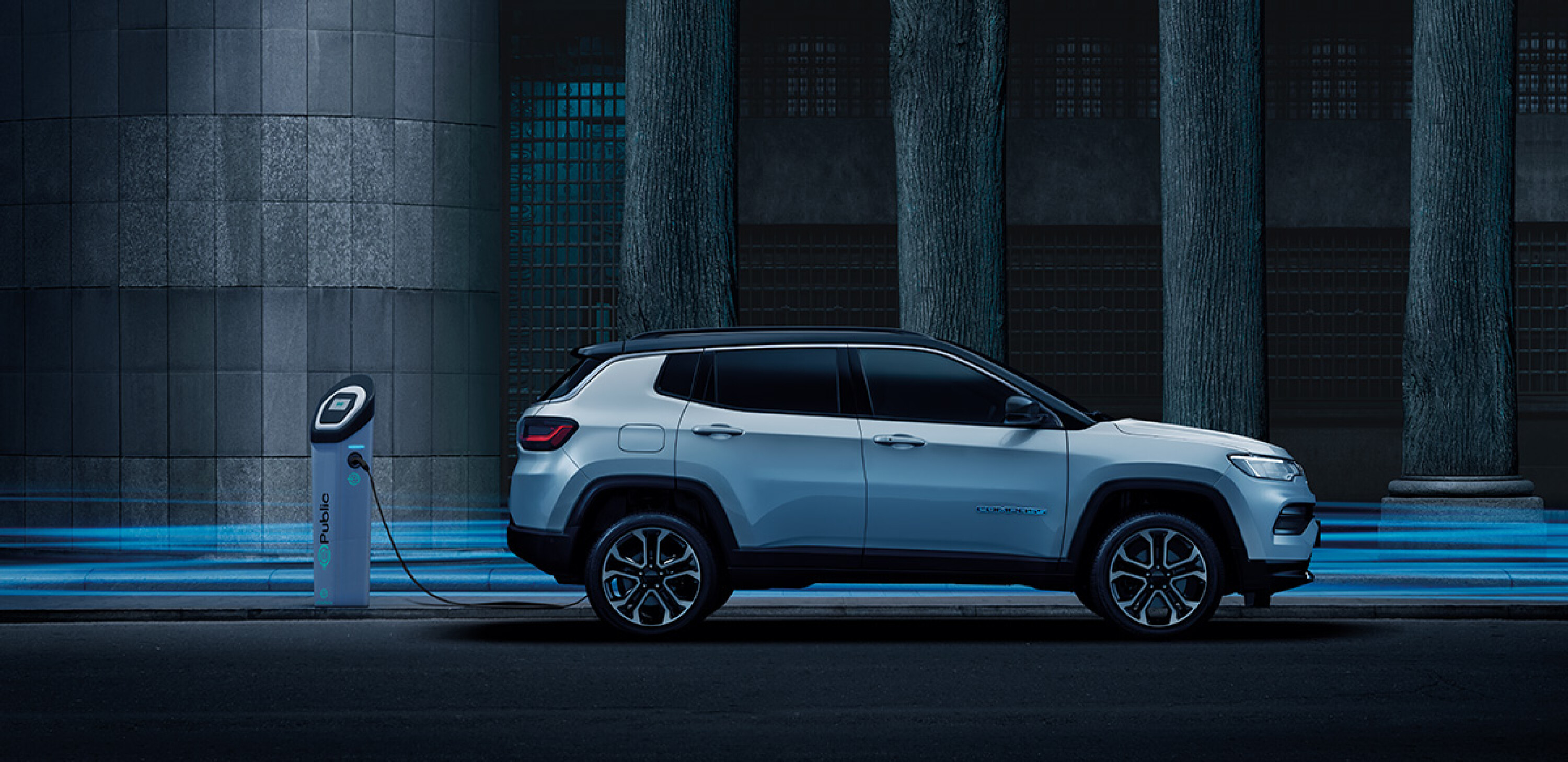
Kia Sportage Hybrid
Kia’s petrol-electric Sportage mid-size SUV arrived in March to take on the Toyota RAV4 hybrid.
There are two specs with the SX fitted with 17-inch alloy wheels, cloth upholstery and a 12.3-inch screen costing $45,950 and the leather-upholstered GT-Line flagship (now with heated steering wheel) $55,420, both before on-road costs.
The top-spec GT-Line steps down to 18-inch alloys (normally 19s) for aerodynamic purposes. Braked towing capacity for the hybrid matches petrol auto Sportage variants at 1650kg.
Kia’s front-wheel drive hybrid powertrain sends its 169kW/350Nm outputs through a six-speed torque converter automatic. Its ADR 81/02 combined consumption rating is 4.9L/100km, just 0.1L/100km shy of a RAV4 hybrid.
The hybrid powertrain is expensive, though, marking an $8400 premium over the 2.0-litre petrol SX and $5700 compared to the GT-Line AWD petrol.
An entry-level Sportage Hybrid S or mid-spec Sportage Hybrid SX+ will not be offered at launch due to limited supply.
MG HS Plus EV
It’s not officially revealed, but we know a new generation of MG’s midsized SUV will debut in 2024.
Patent images point to a rebadged Roewe RX5 already on sale in China.
Details are extremely limited for now, though a plug-in hybrid variant – currently badged Plus EV in Australia – is again anticipated.
The HS is a crucial model for MG as it competes in Australia’s most popular vehicle segment.
Mercedes-AMG GLC63 S E
Like the wagon versions, the GLC 43 gets a mild-hybrid four-cylinder producing 310kW/545Nm while the 63 S E Performance uses the same setup as the C 63 sedan – that means 500kW and 1020Nm for the medium SUV.
Pricing and features are yet to be confirmed but don’t expect much change from $160K for the GLC 43, while the 63 will likely push $200,000 before on-road costs.
Large SUVs
Think of the Tank 500 as China’s answer to the Toyota Prado replete with a hybrid powertrain.
While it is closer in size to the Toyota LandCruiser 300 Series, the GWM Tank 500 starts at just $66,490 drive-away for the Lux Hybrid variant.
It features a 358kW/615Nm petrol-electric hybrid powertrain with a nine-speed automatic, low-range transfer case and locking front differential.
The range-topping Tank 500 Ultra Hybrid is priced at $73,990 drive-away and adds partial Nappa leather upholstery, a 12-speaker sound system and a locking front differential.
Braked towing capacity for the GWM Tank 500 is rated at 3000 kilograms, equivalent to the current Toyota Prado but down on the Ford Everest’s 3.5-tonne capacity.
Hyundai Santa Fe Hybrid
A petrol-electric variant will once again play flagship as a dramatically styled fifth-generation Santa Fe lands in the second quarter of 2024.
It will also be the sole drivetrain at launch, though turbo-petrol power is expected to arrive later to offer more affordable alternatives, with the outgoing large SUV’s diesel four-cylinder and V6 petrol engines heading for the exit.
Santa Fe’s hybrid drivetrain will again combine a 1.6-litre turbo petrol engine with an electric motor, with part-time all-wheel drive. Total outputs are 169kW and 350Nm.
The current Santa Fe Hybrid starts from $63,000, but expect a price increase for the replacement.
Mazda CX-90 PHEV
Mazda’s posher seven-seater SUV debuted in 2023 with six-cylinder turbo petrol and turbo diesel engines. While these inline motors feature (very) mild-hybrid tech with the ability to coast with the engine off, they don’t have the potential to save as much fuel as a hybrid.
Thankfully, that changes in 2024 with the addition of a PHEV (plug-in hybrid vehicle) variant. Although official fuel consumption has yet to be confirmed, the PHEV’s combination of 2.5-litre four-cylinder petrol engine and electric motor is guaranteed to bring better figures than either the petrol or diesel 3.3L six-cylinders – 8.2L/100km and 5.4L/100km, respectively.
As a PHEV, the plug-in CX-90 offers some limited electric-only driving – up to 42km, officially.
The downside is that, based on the Mazda CX-60 range that also offers a variety of drivetrains, the PHEV can be expected to ask a significant price premium over the six-cylinder models.
Mazda will also release its first ever CX-80 large SUV in 2024, which may also be offered with a plug-in hybrid powertrain.
Toyota Prado ‘i-Force Max’
The all-new Toyota Prado goes on sale mid-year with 48-volt technology, though a full hybrid hasn’t been ruled out for Australia.
In North America (and China), where the model will be known as the LandCruiser 250, the Prado is available with an ‘i-Force Max’ drivetrain combining a 2.4-litre turbo petrol engine and electric motor integrated into the eight-speed auto gearbox.
It produces combined outputs of 243kW and 630Nm to offer more grunt than the 150kW/500Nm 2.8-litre turbo diesel and 48V battery combo in the only drivetrain confirmed for our market so far.
As the full hybrid, unlike the 48V system, can also power wheels with the electric motor, it should also be more economical, though Toyota has yet to provide any fuel consumption estimates.
Volkswagen Touareg R
Volkswagen’s first plug-in hybrid for Australia will, perhaps surprisingly, be a model wearing the German brand’s performance ‘R’ badge.
The VW Touareg R, which has been delayed a couple of times, will finally arrive in March – as part of a facelift for the wider line-up of the large, five-seater SUV.
Where other Touareg models employ diesel power, the R features a 250kW 3.0-litre turbo-petrol V6 borrowed from the related Audi Q7 55 TFSI, matched to a 100kW electric motor.
In total, the Touareg R produces 340kW and 700Nm to become the most powerful series-production VW yet.
Although its 5.1sec 0-100km/h claim is slower than the 4.9 seconds of the now-discontinued 310TDI V8, a 14.3kWh lithium-ion battery pack provides a 51km electric-only driving range to help achieve low official fuel consumption of 3.3L/100km.
Passenger cars
MG3
The new MG3 was revealed in February, with the brand’s Australian arm confirming it will offer a hybrid option when it lands in late 2024.
The hybrid system combines a 75kW/128Nm 1.5-litre four-cylinder petrol with a 100kW/250Nm electric motor for a 143kW total system output.
It has a 1.83kWh battery and offers four drive modes: Electric-only, series-hybrid, ‘series and charge’, ‘drive and charge’, and parallel-hybrid.
A WLTP-rated combined fuel consumption of 4.4L/100km is claimed, compared to 6.7L/100km for the outgoing model under the less stringent ADR testing cycle.
Pricing is still to be confirmed, although MG Australia has confirmed that “due to advancements in technology, safety and specification”, the new MG3 will not be priced from under $20,000 when it arrives in local showrooms.
Honda Accord
After being told we’re not getting the new hybrid-only Accord several times, Honda’s finally flipped – the midsize sedan is coming to Australia after all.
Pricing is yet to be set for the hybrid-only Accord that’s set to arrive in the second quarter of 2024(April-June inclusive) in a single e:HEV RS trim.
The Accord e:HEV RS uses Honda’s fourth-gen hybrid system, the same found in the current CR-V. It employs a 2.0-litre Atkinson cycle petrol engine and twin electric motors for total outputs of 152kW and 335Nm.
We expect the Hyundai Sonata and Toyota Camry rival to carry a premium over the smaller Civic hybrid ($55,000 drive-away) and arrive in dealers priced around $60-65K drive-away.
Honda Australia has yet to confirm where it will source Accord production (it’s built in the United States, China, and now Thailand) however, Thailand is most likely.
Toyota Camry
The ninth-generation Camry will go fully hybrid when the range launches in the second half of 2024.
Despite Toyota claiming the midsize sedan is a new generation, it’s really a deep facelift with new bumpers, freshened sheet metal, and jazzed-up cabin. The key hard points are unchanged from the eighth-gen sedan.
Toyota claims “lighter and more compact electric motors” produce more power – likely employing the new NiMh battery chemistry found in the Japanese Aqua hatch and global Lexus LBX.
North American markets get the option of AWD for the first time but Aussie cars will keep front drive.
Inside, there’s design influence from almost every new Toyota: C-HR, bZ4X, Crown and more.
The new 8- or 12.3-inch multimedia touchscreen has fresh software for wireless Apple CarPlay and Android Auto, and the available ‘Hey, Toyota’ intelligent assistant.
Pricing is yet to be announced but expect it to move North from the current $35,051 (before on-road costs) Ascent petrol variant.
Utes
BYD ute
The highly ambitious Chinese brand BYD (Build Your Dreams) will continue its Australia product assault in 2024 with at least two new vehicles – one of which, crucially for this market, is a dual-cab ute.
Already spotted testing on local roads, the as-yet-named rival for the likes of the Ford Ranger, Toyota HiLux and Mitsubishi Triton will initially be offered with a plug-in hybrid drivetrain.
BYD is said to be targeting a 1000-kilometre-plus driving range for the petrol-electric Ute.
An all-electric version of the BYD Ute will follow around 12 to 24 months later in 2025 or 2026.
GWM Cannon Alpha
The GWM Cannon Ute’s bigger brother is on its way to Australia, bringing more carrying space and greener motoring from mid 2024.
When it arrives, the Cannon Alpha will be the first hybrid ute in Australia, beating the new Ford Ranger PHEV to market by a few months at least, along with others like the hybrid HiLux and the recently teased BYD plug-in hybrid ute.
As a big brother to the Cannon already sold in Australia, the Cannon Alpha measures 5440mm long (+30mm over the Cannon), 1991mm wide (+57mm) and 1924mm tall (+38mm), rolling on a 3350mm wheelbase (+120mm).
In Australia, the Cannon Alpha will be sold with a 2.0-litre turbo petrol hybrid powertrain, its combustion and electric motors combining to deliver 255kW and a huge 648Nm. On their own, the motors produce 180kW/380Nm and 78kW/269Nm respectively.
Isuzu D-Max mild-hybrid ute
Stepping into carbon neutrality, Isuzu reveals hybrid and EV concepts, with some headed for Australia.
The 2025 Isuzu D-Max High-Lander MHEV is powered by a 1.9 litre “DDi Blue Power” turbo-diesel engine, combined with a 48V mild hybrid drivetrain.
Isuzu Thailand states that this setup is designed “to reduce the engine workload during startup, reducing vibration and helping to reduce CO2,” with no power, range or technical figures speculated yet.
Toyota HiLux 48V
Don’t call it a hybrid, says Toyota of its ‘V-Active’ 48-volt electrical system now available on 2024 HiLux SR, SR5, and Rogue trims.
Toyota’s 48-volt strengthened 2.8-litre diesel engine generates the same 150kW at 3400rpm and 500Nm between 1600-2800rpm as regular HiLuxes, though is said to improve fuel efficiency by up to five per cent compared to the conventional diesel powertrain.
Toyota has yet to quantify efficiency improvements.
When charged through regenerative braking, Toyota says the 48V battery sends up to 12kW and 65Nm of additional power and torque, respectively, through the motor generator to the engine “to enhance acceleration, power and efficiency”.
Prices are available, though, with V-Active equipped SR models between $1025-1605 dearer, and the technology fitted standard to SR5 and Rogue dual-cab trims.
Initial examples will begin arriving in March/April.
Toyota Tundra
It’s all but official that Toyota will take on the Ford F-150, Ram 1500 and Chevrolet Silverado with its own US-sourced full-size pick-up.
A few hundred ‘prototype’ examples of right-hand-drive-converted Tundras will be the hands of cherry-picked Australian customers by April, as part of an intensive local development program.
While Toyota Australia makes us wait longer for official confirmation, the local Tundras – converted by local company Walkinshaw Automotive Group – feature an ‘i-Force Max’ petrol-electric drivetrain with 326kW and 790Nm.
Sports cars
Chevrolet Corvette E-Ray
Chevrolet’s latest-generation sports car icon has hitherto been offered in Australia with a normally aspirated V8 engine, but this year gains electrified power for the first time.
Confirmed a year ago for this market, the Corvette E-Ray hybrid links the 6.2L ‘LT2’ V8 found in the regular coupe and convertible with a 119kW/170Nm electric motor.
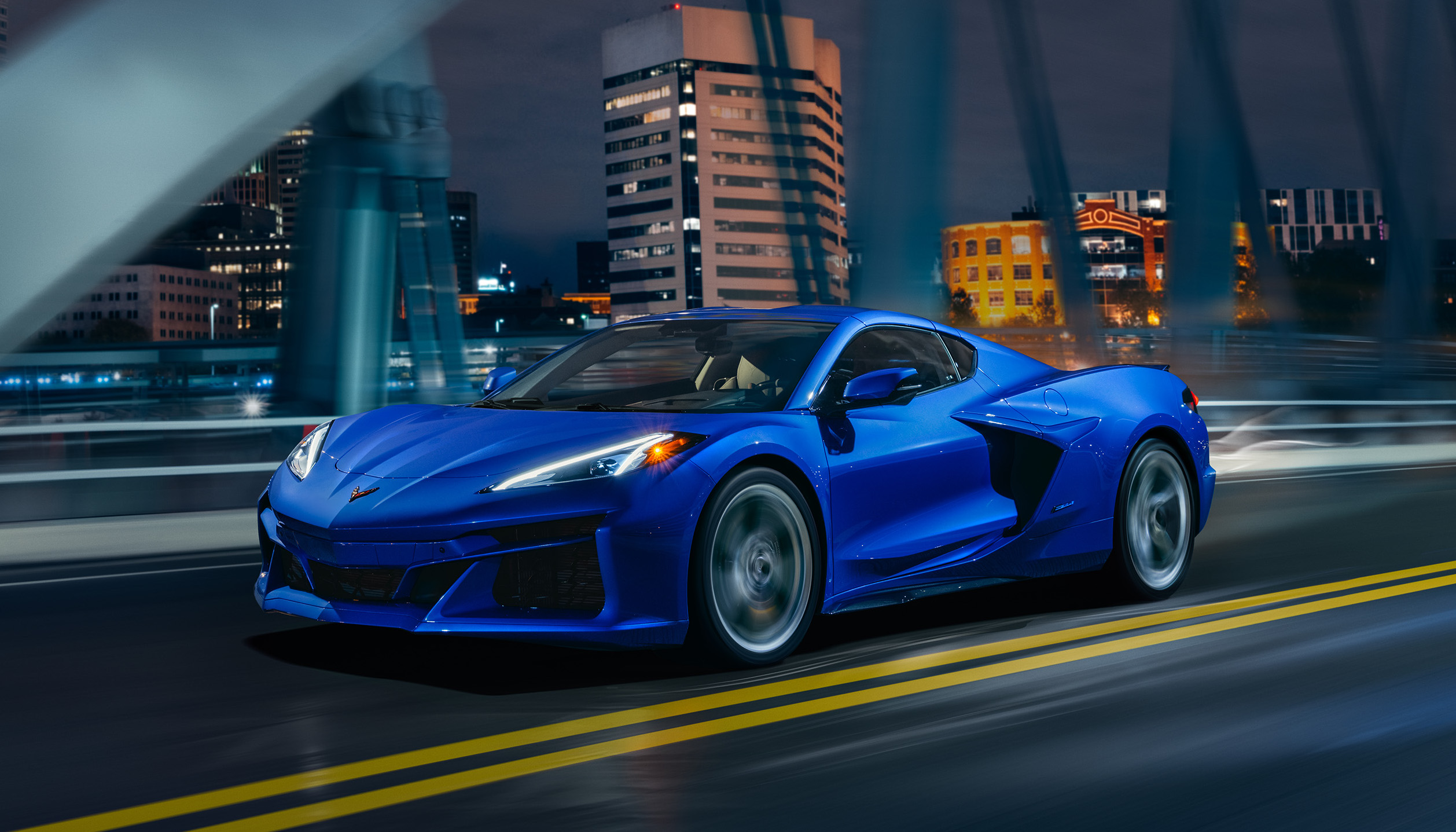
With a total power output of 448kW not far behind the 475kW of the track-and-road-focused Z06 also coming this year, the E-Ray is actually the fastest-accelerating Corvette with a claimed 0-60mph (0-97km/h) time of 2.5 seconds and a quarter-mile (0.4km) time of 10.5 seconds (a tenth quicker than the Z06).
Pricing for the Corvette E-Ray has yet to be confirmed, but expect a number north of $250,000.
Crossovers
Peugeot 408
Part sedan, part SUV, Peugeot’s 408 will arrive in the third quarter in just one model grade with a sole powertrain option.
Which is no shame, really, as sampling petrol and hybrid 408s in Europe reveals the 165kW petrol-electric option in question to be the prime choice. It combines a 1.6-litre turbo-petrol with an 81kW electric motor and 12.4kWh battery pack for 0-100km/h in 7.8 seconds and 64km of electric-only range.
A price tag is yet to be confirmed, but it’s safe to expect a bit of a premium for going so bold. An estimate based on its 308 sibling suggests it’ll start north of $70,000, although Peugeot goes hard on standard equipment these days and the 408’s interior will drop your jaw with its design while feeling immaculately put together.
This is a premium player and a far cry from outdated French car cliches.
We recommend
-
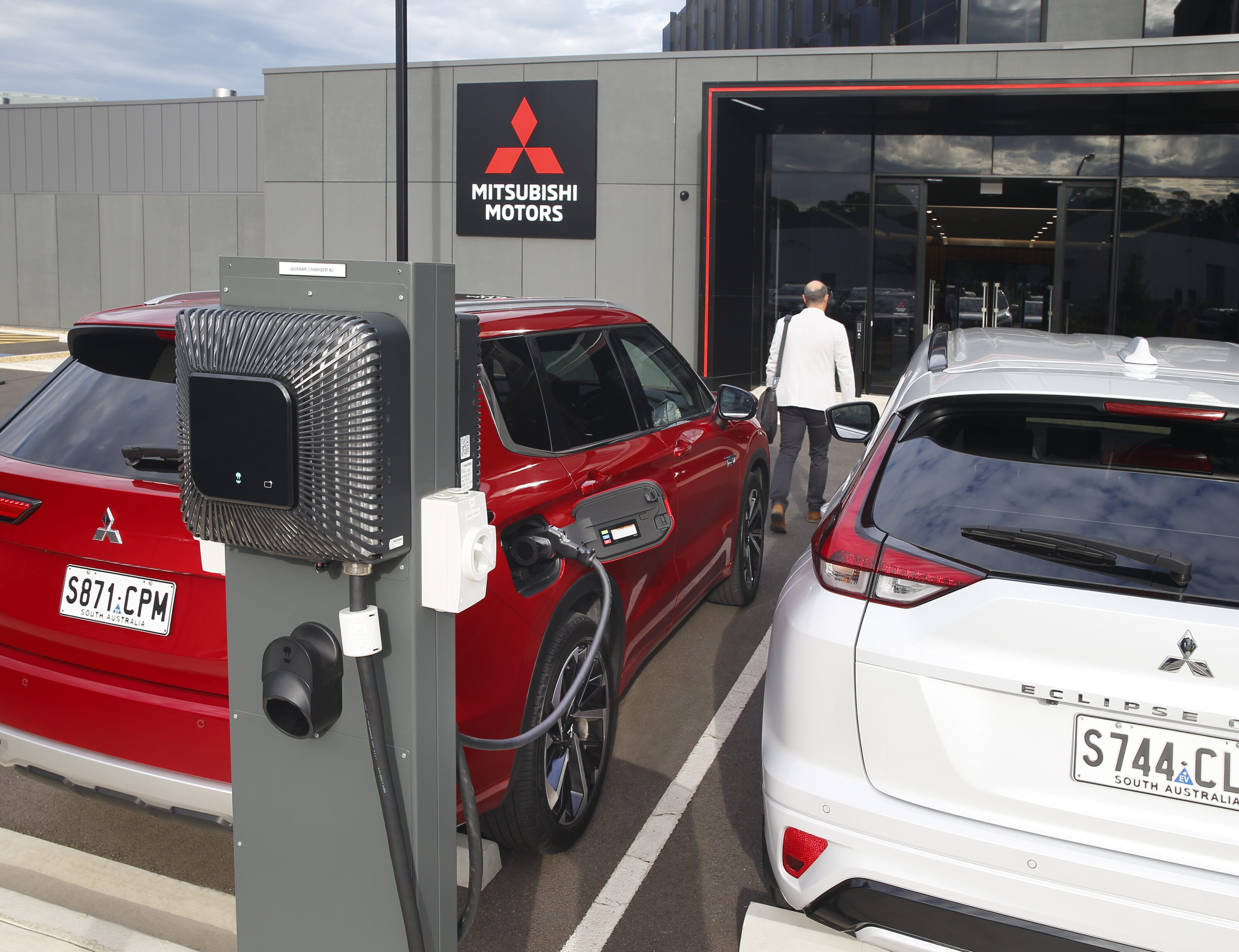 Advice
AdviceWhat is a hybrid car? Mild, 'traditional' and plug-in hybrids explained
Electric vehicles may be the flavour of the moment, but hybrids are still very much in vogue: which will suit your life best?
-
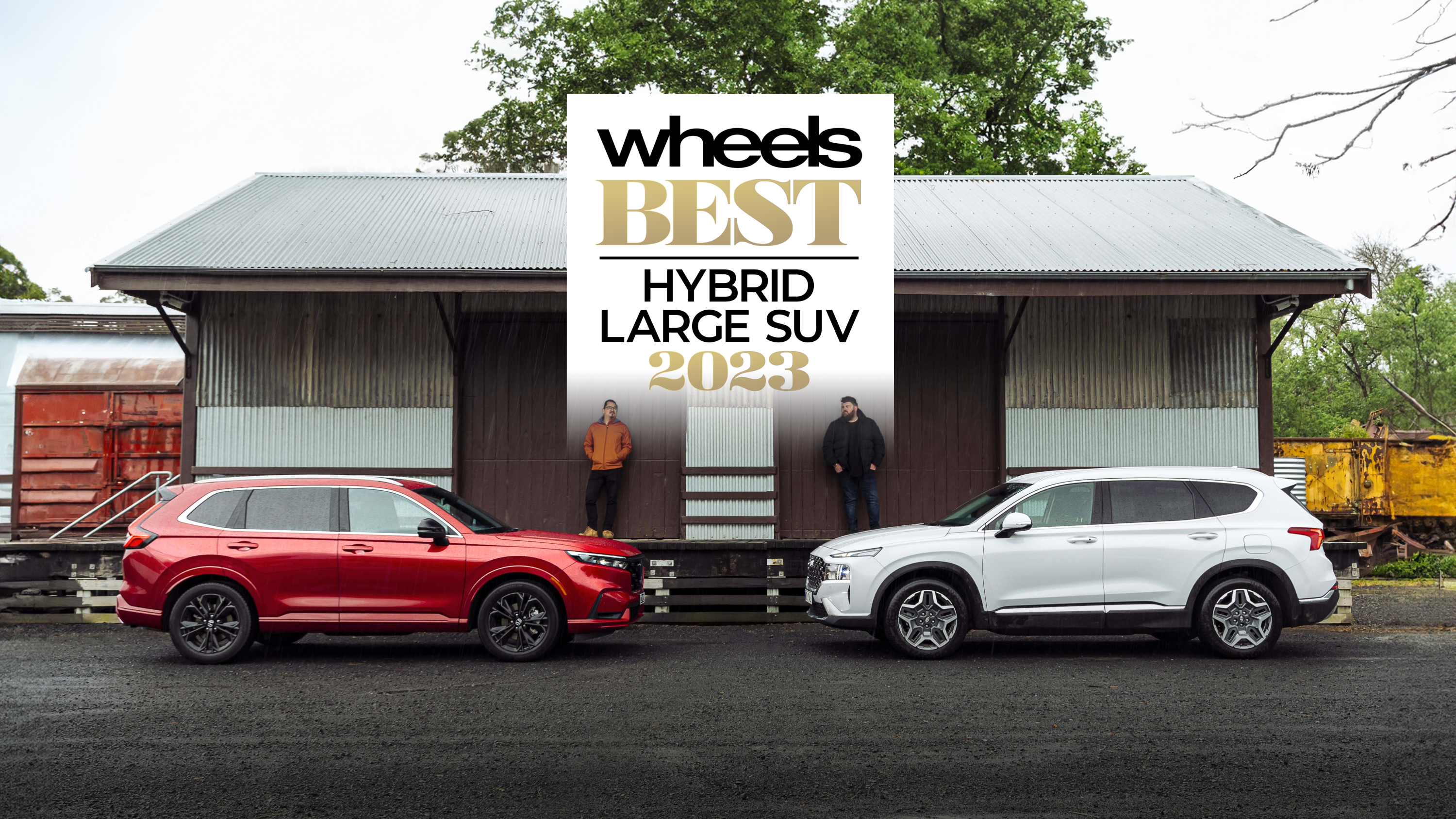 Best Large SUVs
Best Large SUVsBest Large Hybrid SUV
Honda's household-name CR-V and Hyundai's well-established Santa Fe duke it out to reveal which is the most efficient and impressive family SUV.
-
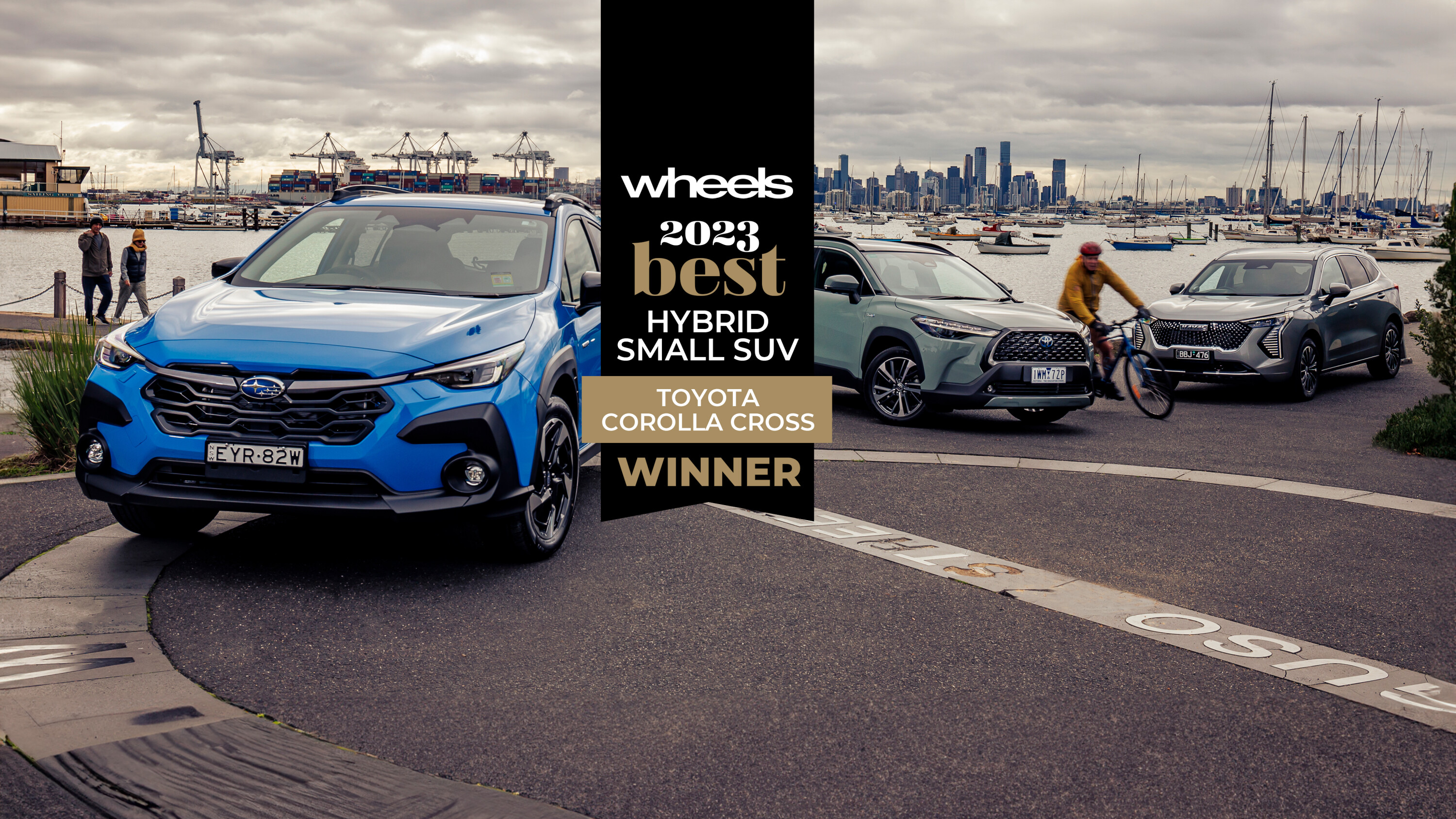 Best Small SUVs
Best Small SUVsBest Hybrid Small SUV: Toyota Corolla Cross Hybrid
If slashing your fuel bill is an imperative for your next SUV, you’ve arrived at the right place


